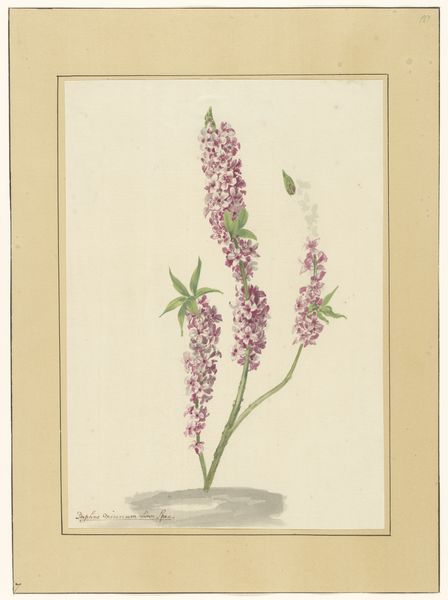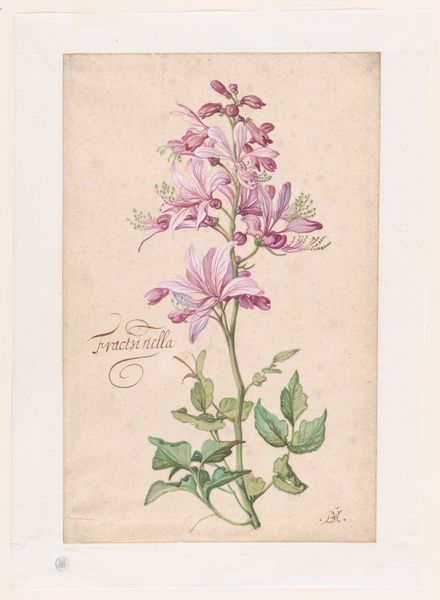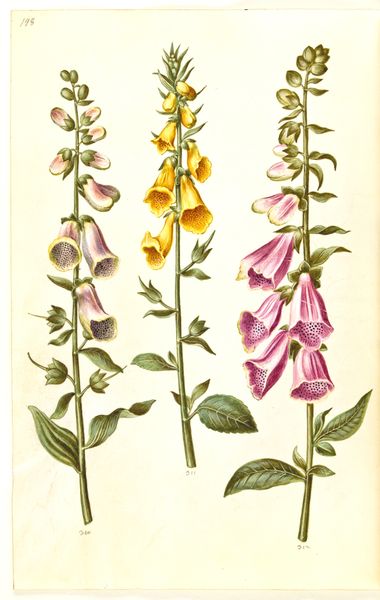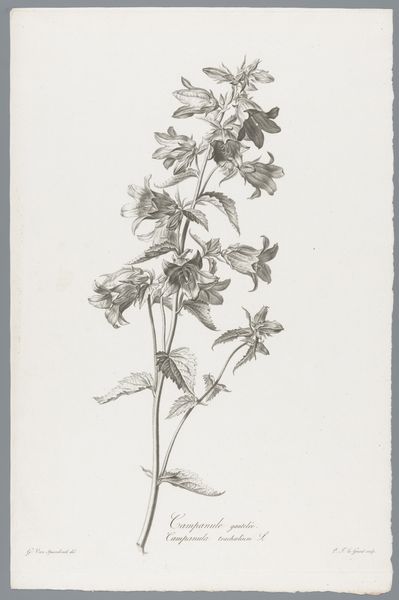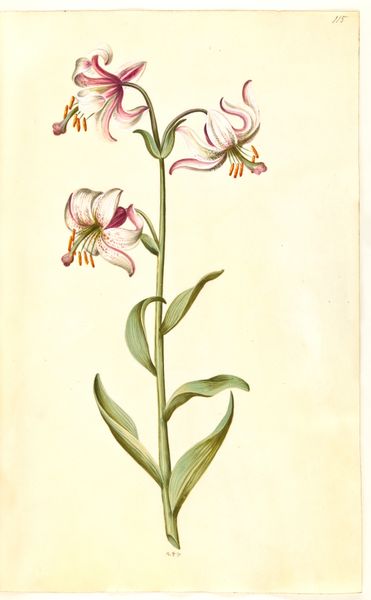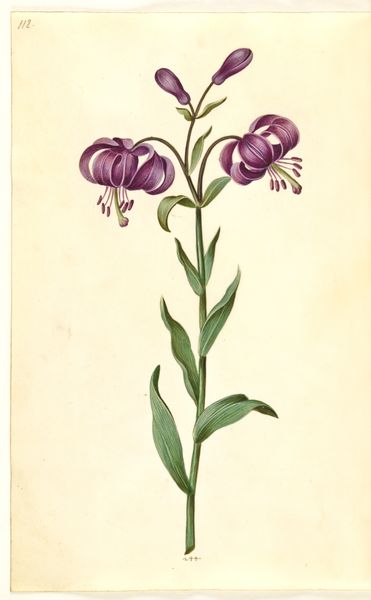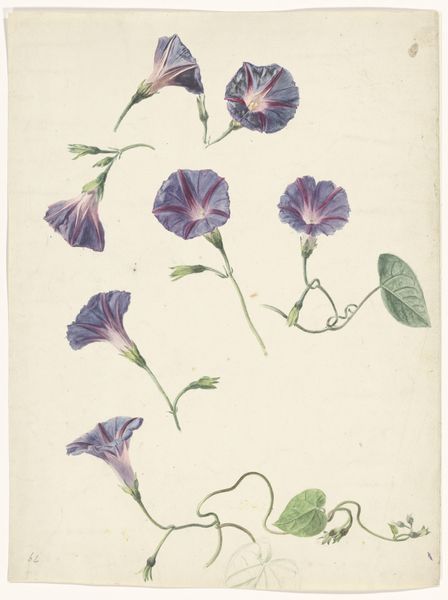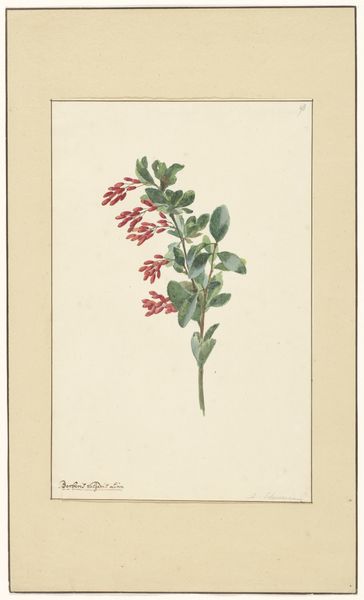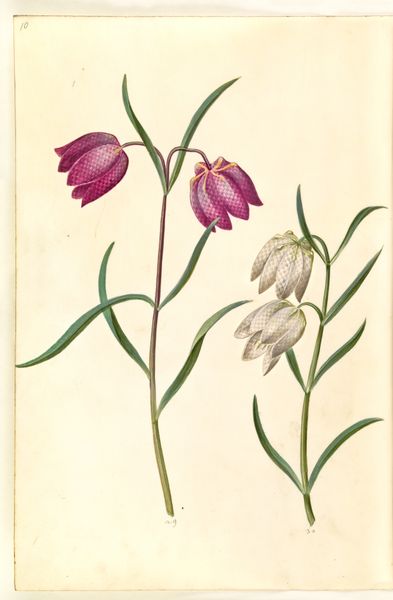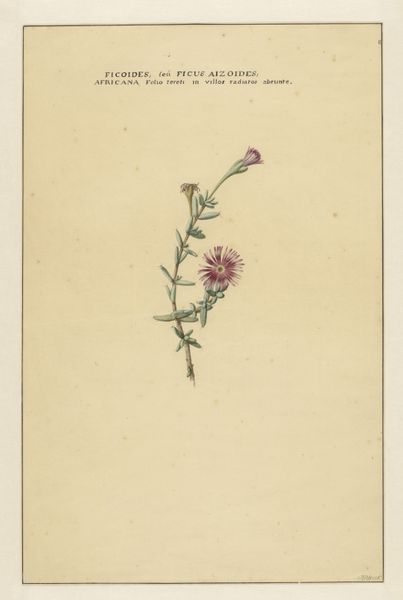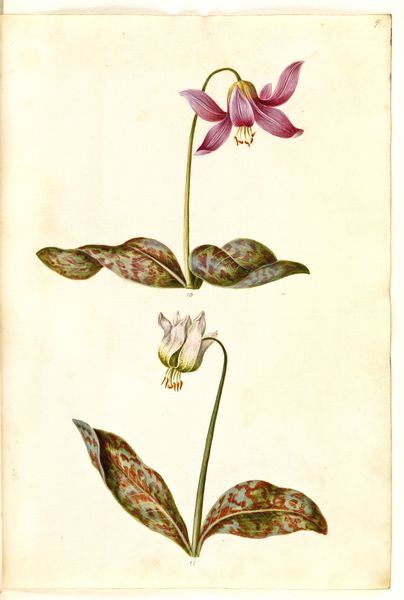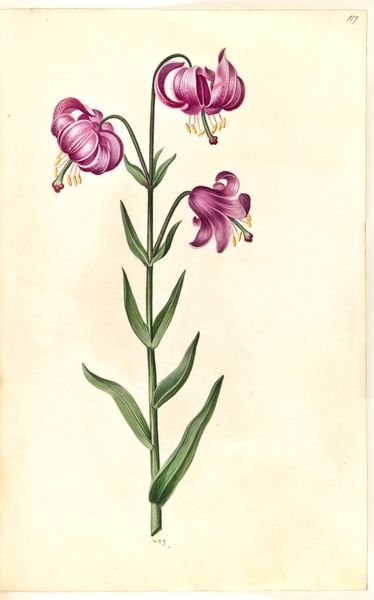
drawing, watercolor
#
drawing
#
watercolor
#
botanical art
#
watercolor
Dimensions: 343 mm (height) x 212 mm (width) (bladmaal)
Editor: This is "Campanula," a watercolor and drawing on paper by Christen Dalsgaard, created in 1873. The delicacy of the rendering, especially the pale purple hues, evokes such a tender, almost melancholic feeling. What historical contexts might inform our understanding of this botanical study? Curator: It's interesting you pick up on that tenderness. Consider the 19th century, particularly the rise of scientific illustration and the evolving roles of women. Botany became an acceptable field of study, almost a genteel hobby, for women. Dalsgaard, though male, might be subtly engaging with this cultural shift. Does the detail of his work romanticize or critique the limitations placed upon women's intellectual pursuits at the time? Editor: That's a perspective I hadn't considered. It complicates the seemingly straightforward beauty of the image. Was Dalsgaard intending to make a statement? Curator: Perhaps not explicitly, but an artist always exists within their social fabric. The close examination of nature also ties into broader discourses around Romanticism and the relationship between humans and the natural world – a relationship that was rapidly changing with industrialization. How might we view this intimate portrait of a flower in light of those large societal shifts? Does it evoke a longing for a disappearing connection to the natural world? Editor: I see what you mean. The piece, at first glance so simple, reveals itself to be deeply intertwined with the social and intellectual currents of its time. It speaks volumes about gender, society, and the evolving relationship with nature. Curator: Exactly. And by recognizing these connections, we avoid passively consuming art, but actively engaging with its meaning. Editor: It's really made me rethink botanical illustrations. Thank you.
Comments
No comments
Be the first to comment and join the conversation on the ultimate creative platform.
